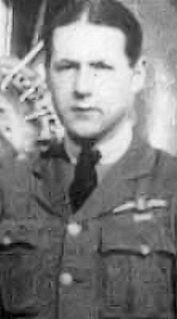Related Research Articles

Francis Granger Quigley, was a Canadian aviator and flying ace of the First World War, who was credited with 33 aerial victories. He was notable for scoring the majority of his victories against German fighter planes.
William Ernest Shields DFC & Bar was a Canadian First World War flying ace, officially credited with 24 victories.
Captain Ernest Charles Hoy DFC was a Canadian First World War flying ace, officially credited with 13 victories. He later pioneered airmail flight over the Canadian Rockies.
Lieutenant Lionel Arthur Ashfield DFC was a World War I British flying ace credited with seven aerial victories.
Captain Rupert Norman Gould Atkinson was a British World War I flying ace credited with five aerial victories.
Captain Frank Billinge, was a World War I flying ace credited with five aerial victories.
Second Lieutenant William Eric Bottrill was a Canadian World War I flying ace credited with five aerial victories.
Group Captain Robert Lyle McKendrick Barbour, was a Scottish airman and a flying ace of the First World War credited with six aerial victories.
Sergeant-Observer William James Middleton was a British World War I flying ace credited with six aerial victories.
Sergeant Ernest Antcliffe was a World War I flying ace gunner who, in conjunction with his pilots, was credited with seven aerial victories between 25 June 1918 and the end of the war.
Lieutenant George Raby Riley was a British World War I flying ace credited with thirteen aerial victories. He was an ace balloon buster, as well as an ace over enemy aircraft.

Lieutenant Kenneth Russell Unger was an American World War I flying ace credited with fourteen aerial victories. His candidacy rejected by his own nation, Unger applied to the British Royal Flying Corps for military pilot training in June 1917. Once trained, he was assigned to the Royal Naval Air Service (RNAS). As the RNAS was merged into the Royal Air Force, Unger scored his aerial victories between 26 June and 1 November 1918. In later life, Unger remained involved in aviation and served again during World War II. He also joined the U.S. Navy Reserves, rising to the rank of rear admiral.
Lieutenant William Thomas Barnes was an English World War I flying ace. He served as an observer/gunner in Bristol F.2 Fighters, gaining, in conjunction with his pilots, nine confirmed aerial victories over German Fokker D.VII fighter planes. Post-war he served in the Royal Irish Constabulary and was killed in the Kilmichael ambush on 28 November 1920.
Walter Naylor, & Bar was the leading observer ace of the Royal Naval Air Service, with 14 accredited victories. He flew as an enlisted observer/gunner in Airco DH.4 bombers in No. 5 Naval Squadron along the English Channel.
Captain John Stevenson Stubbs DFC AFC was an English First World War flying ace credited with 11 official victories. He was a pioneering bomber pilot who was the war's leading ace for the British Airco DH.9. He also carried off the rather unusual feat of destroying an enemy observation balloon with a bomber.
Lieutenant Leonard Arthur Christian was a Canadian World War I flying ace credited with nine aerial victories scored while he flew as an observer/gunner on Airco DH.9 bombers.
Captain George William Francis Darvill was an English World War I flying ace credited with nine aerial victories.
Captain John William Aldred was an English World War I flying ace credited with eight aerial victories. He began military service in World War I as an infantryman and transferred to flight duty as an observer. After scoring two aerial victories and winning the Military Cross, he qualified as a fighter pilot, scored six more triumphs, and earned a Bar to his MC in lieu of a second award.

Charles Philip Oldfield Bartlett, was a British flying ace of the First World War, credited with eight aerial victories in the course of flying bombing sorties against the Germans. He remained in service after the war, even though he struggled with health issues that threatened his forced resignation. He would serve until 1932, rising to the rank of squadron leader.
Lieutenant Malcolm Plaw MacLeod was a Canadian flying ace. He was credited with seven aerial victories scored during the closing days of World War I. He then returned to Canada to complete his education and work as a stockbroker until World War II, when he served in the Royal Canadian Air Force for the war's duration.